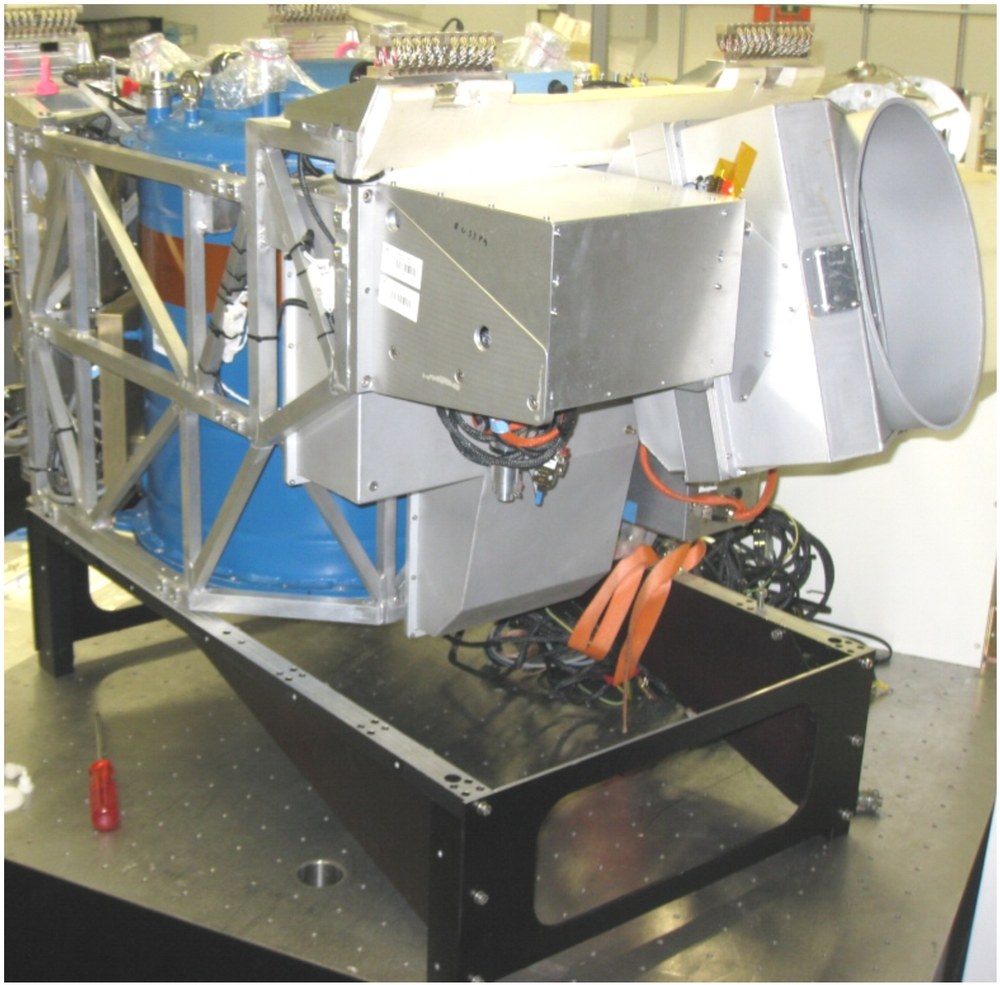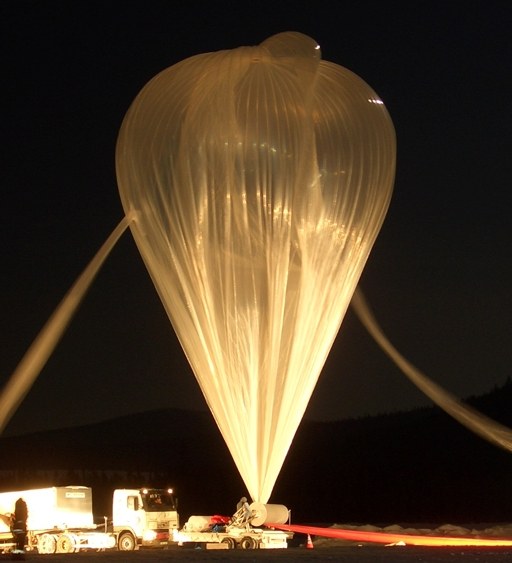TELIS





TELIS (an acronym for TErahertz and Submillimeter LImb Sounder) is a balloon-borne three-channel heterodyne spectrometer financed by DLR and developed at its Remote Sensing Technology Institute in the Experimental Methods department. For the three measurement channels cooled by liquid helium, two detectors were provided by Rutherford Appleton Laboratory, Great Britain, (499-503 GHz) and by the Netherlands Institute for Space Research (SRON), Netherlands, (450-660 GHz). The third, for the terahertz range (1790-1870 GHz), was created at DLR, along with the associated optical, mechanical and control systems for the entire instrument. The development of TELIS benefited from the available expertise that was brought together because of this international cooperation. In addition to the partners mentioned above, Bern University in Switzerland, Chalmers University in Sweden, and the Jet Propulsion Laboratory, USA, were also involved.
TELIS measures in a limb-sounding mode, in which the instrument’s viewing direction is at a tangent to the targeted atmospheric altitude, which maximizes the signal at the tangent point. The advantage of this approach is excellent altitude resolution, ca. 2 km for the instrument. In order to reach the altitude required for the measurements, up to 38 km, the heterodyne spectrometer is operated on a stratospheric balloon. But TELIS does not climb into the stratosphere alone; it is accompanied in a gondola by the MIPAS-B2 Fourier spectrometer developed at the Institute of Meteorology and Climate Research at KIT, Karlsruhe, and tried and tested over 20 years. The gondola infrastructure was provided by the Karlsruhe team.
Together, the two instruments comprise a complete chemistry mission for the tropopause/stratosphere which is unique worldwide. The science goal is to measure the concentration profiles of trace gases in the lower stratosphere and in the tropopause. This is accomplished by measuring the thermal emission of molecular lines against the cold cosmic background. For TELIS, the focus is on typically short-life species related to ozone chemistry (such as OH, ClO, BrO, HCl, O3, HOCl, HO2) and climate-relevant trace gases like water vapor and its isotopes (H2O, H217O, H218O, HDO). The molecules covered complement the group of species measured by MIPAS-B2 and in addition provide an information overlap for consolidating the measurement values from both instruments. The advantage of the data obtained by TELIS comes in particular from the high spectral resolution of about 2.3 MHz (for a bandwidth of 2 GHz) and from the brief measuring interval of under 3 seconds per tangent spectrum. The latter advantage allows for high temporal resolution of dynamic atmospheric processes.
TELIS is a regular component of scientific measurement campaigns. The first test flight took place in 2008 in Teresina, Brazil. The experience gained there led to a modification of the instrument and cleared the way for other successful flights. In March 2009, January 2010 and April 2011, scientific campaigns took place in Kiruna. During these campaigns in northern Sweden, measurements were attempted in the polar vortex in an activated atmosphere. A characteristic of these self-contained air currents is low temperatures, which cause rapid ozone breakdown. Although no stable vortex was formed in 2009, in 2010 measurements could be made in a stable polar vortex, and in 2011 in one that was in the process of dissolution.
The data obtained are processed in the Experimental Methods department to calibrated radiance spectra including their geolocation. The various TELIS flight campaigns are accompanied by post-flight calibration in the lab using gas cell measurements. This permits in the lab under controlled conditions a simulation as realistic as possible of the atmospheric situation. The elaborate instrument characterization benefits from the department’s numerous high-tech measuring instruments, such as the high-resolution BRUKER IFS 125 HR Fourier spectrometer. The insights thereby gained in the instrument’s radiometry are reflected in improvements to the data product arrived at in an iterative process. The inversion of processed, corrected spectra to concentration profiles is carried out together with retrieval groups at SRON and DLR (Atmospheric Processors department of the Remote Sensing Technology Institute).
